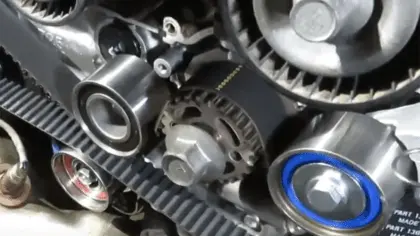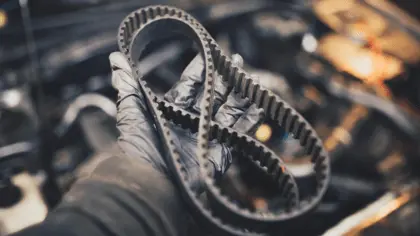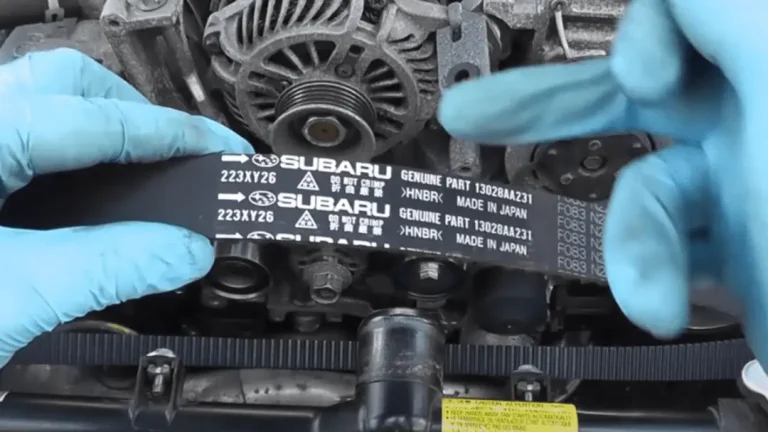The Subaru Outback is a reliable and durable vehicle, but like all cars, it requires regular maintenance to keep it running smoothly. One of the most important maintenance tasks for the Outback is replacing the timing belt on schedule. In this article, we’ll explain the Subaru Outback timing belt replacement schedule and why it’s so important to follow it.
What Happens if You Don’t Replace the Timing Belt on Schedule?

You can fall in the danger of the timing belt snapping while you’re driving if you don’t change it on time. This can result in an immediate engine shutdown and call for a total rebuild. By just replacing the timing belt on schedule, this pricey repair may be easily avoided.
Why is It Important to Replace the Timing Belt on Schedule
Your car’s timing belt is one of the most important components in its engine, and replacing it on schedule is crucial to keeping your car running properly. The timing belt ensures that the engine’s valves open and close at the proper times by synchronizing the rotation of the crankshaft and camshaft. It also helps to keep the engine’s pistons moving up and down in sync.
The engine will not start if the timing belt snaps, and it will probably need to be fixed or replaced. This can be a costly repair, so it’s important to maintain your timing belt and replace it before it breaks.
However, If you’re not confident in your ability to do it yourself, ask for assistance, and you can take it to a mechanic or a dealership. They’ll be able to replace it quickly and get your car back on the road.
Also Read: How to tell if valves are bent after timing belt broke?
How Often Should You Replace the Timing Belt on a Subaru Outback?

The Subaru Outback is a versatile and reliable vehicle, but like all cars, it needs regular maintenance to keep it running smoothly. One of the most important maintenance tasks for any car is replacing the timing belt.
In addition, the timing belt is a crucial part of the engine, and if it breaks it can cause serious damage. That’s why it’s important to follow the replacement schedule recommended by the manufacturer.
However, timing belt replacement for the Subaru Outback is advised every 10 years or 100,000 kilometers, whichever comes first. If you do a lot of driving in dusty or off-road conditions, you may need to replace the belt more often.
In case, you’re not sure when the last time the timing belt was replaced, it’s a good idea to have it checked by a mechanic. They can tell you if it needs to be replaced and can do the job for you.
Furthermore, timing belt replacement is a rather easy and affordable job, so there’s no excuse for putting it off. By following the recommended replacement schedule, you can help ensure that your Subaru Outback will continue to run reliably for many years to come.
See more: Subaru timing belt replacement interval.
Tips for Avoiding Timing Belt Issues
There are a few things you can do to help avoid timing belt issues:
- Keep up with regular maintenance on your car
- Inspect the timing belt regularly for signs of wear and tear
- Replace the timing belt before it breaks
- If you’re not sure how to replace the timing belt, take it to a mechanic
By following these tips, you can help keep your car’s timing belt in good condition and avoid costly repairs.
See more: bad timing belt symptoms.
Frequently Asked Questions
1. What are the symptoms of a timing belt that needs to be replaced?
If your timing belt is beginning to fail, you may notice symptoms such as the engine skipping or misfiring, the engine running Rough, or the check engine light coming on.
2. What is the cost of timing belt replacement?
The cost of timing belt replacement will vary depending on your specific vehicle and where you have the work done. However, you can expect to pay anywhere from $400 to $800 for the replacement.
3. What other maintenance should I do at the same time as timing belt replacement?
It is also recommended that you replace the water pump and serpentine belt when replacing the timing belt.
4. How do I know if my timing belt has been replaced?
If you are unsure if your timing belt has been replaced, you can check your vehicle’s maintenance records. If you don’t have records, you can have a mechanic check for you.
5. What is the difference between a timing chain and a timing belt?
A timing chain is a metal chain that connects the crankshaft to the camshaft and is located inside the engine. A timing belt is a rubber belt that connects the same parts but is located outside of the engine.
6. What happens if my timing belt breaks while I’m driving?
If your timing belt breaks while you’re driving, it can cause serious engine damage. The engine will stop running and will need to be repaired or replaced.
Final Words
The timing belt is a vital component of your car’s engine, and replacing it on schedule is crucial to keeping your car running properly. Be sure to check your owner’s manual to see when your car’s timing belt needs to be replaced, and don’t hesitate to take it to a mechanic if you’re not sure how to do it yourself.


